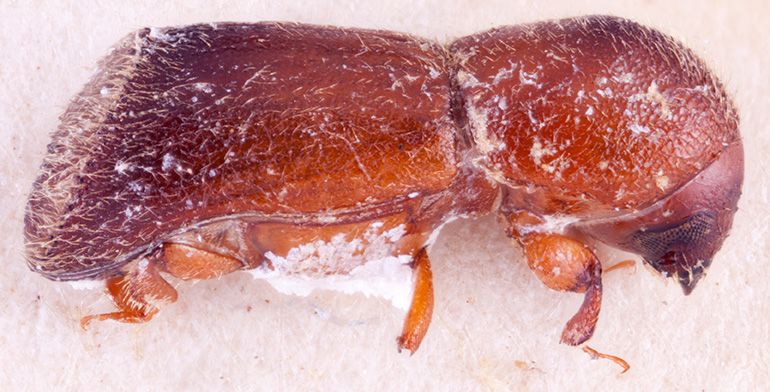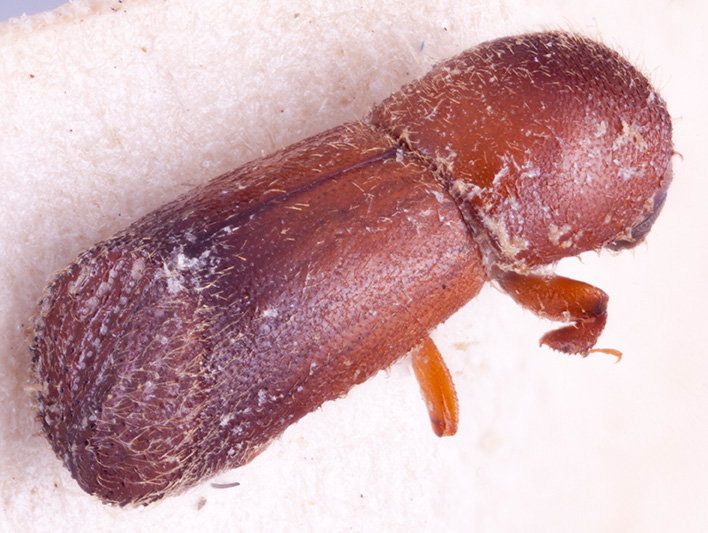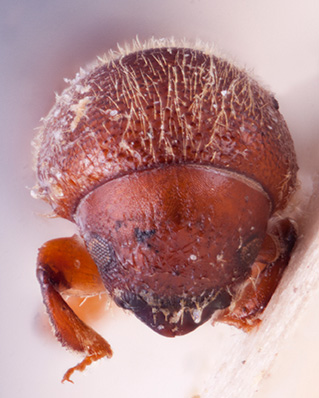Cyclorhipidion umbratum
|
Cyclorhipidion umbratum holotype lateral; R.K. Osborn |
|
Cyclorhipidion umbratum holotype dorsal; R.K. Osborn |
|
Cyclorhipidion umbratum holotype declivity; R.K. Osborn |
|
Cyclorhipidion umbratum holotype frontal; R.K. Osborn |
Taxonomic history
Xyleborus umbratus Eggers, 1941b: 223.
Cyclorhipidion umbratum (Eggers): Wood and Bright, 1992: 704.
Diagnosis
3.8−4.1 mm long (mean = 4.0 mm; n = 4); 2.53−2.86 times as long as wide. This species is distinguished by the large size; truncatetruncate:
appearing cut off or suddenly shortened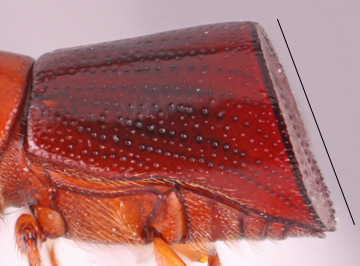 declivitydeclivity:
declivitydeclivity:
downward slope of either the pronotum or elytra
 surrounded by a granulategranulate:
surrounded by a granulategranulate:
pertaining to a coarse, grainy surface texture
 circumdeclivital costacosta:
circumdeclivital costacosta:
elevated ridge that is rounded at its crest, not necessarily with sharp appearance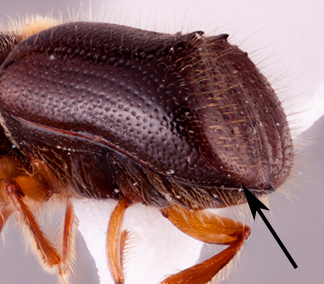 ; pronotumpronotum:
; pronotumpronotum:
the dorsal surface of the thorax
subquadrate from dorsaldorsal:
of or relating to the upper surface; opposite of ventral
 view (type 3); declivitaldeclivital:
view (type 3); declivitaldeclivital:
pertaining to the elytral declivity
interstrial punctures replaced by a single row of tubercles; declivitaldeclivital:
pertaining to the elytral declivity
strial punctures large, distinct; declivitaldeclivital:
pertaining to the elytral declivity
face with 3 striaestria:
punctures in rows, which may or may not be impressed to make grooves , feebly sulcatesulcate:
, feebly sulcatesulcate:
deeply furrowed or grooved
on striaestria:
punctures in rows, which may or may not be impressed to make grooves ,/4, surface smooth; and declivitaldeclivital:
,/4, surface smooth; and declivitaldeclivital:
pertaining to the elytral declivity
striae clearly, uniformly impressedimpressed:
a depression in a surface
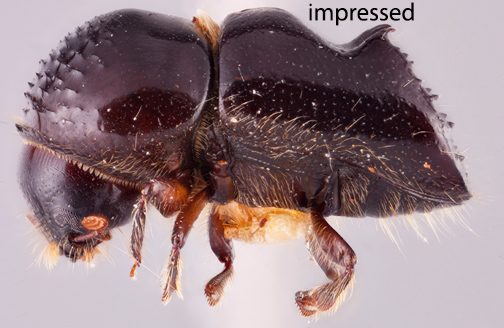 ; and interstriaeinterstria:
; and interstriaeinterstria:
longitudinal spaces along the elytra between the striae, which is not as<br />
impressed and bear smaller punctures.
 inflatedinflated:
inflatedinflated:
blown up; distended
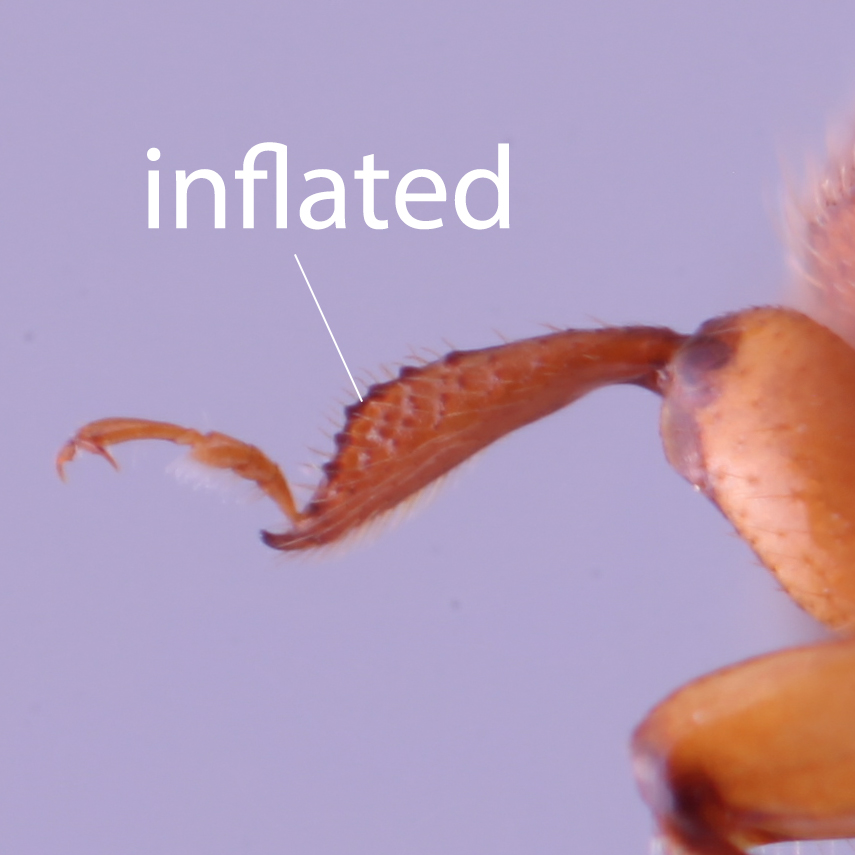 .
.
May be confused with
Cyclorhipidion amasoides, C. amputatum, C. circumcisum, C. muticum, C. trucaudinum, all of which are large and have an obliquely truncateobliquely truncate:
nearly truncate but rounded not flat in lateral view
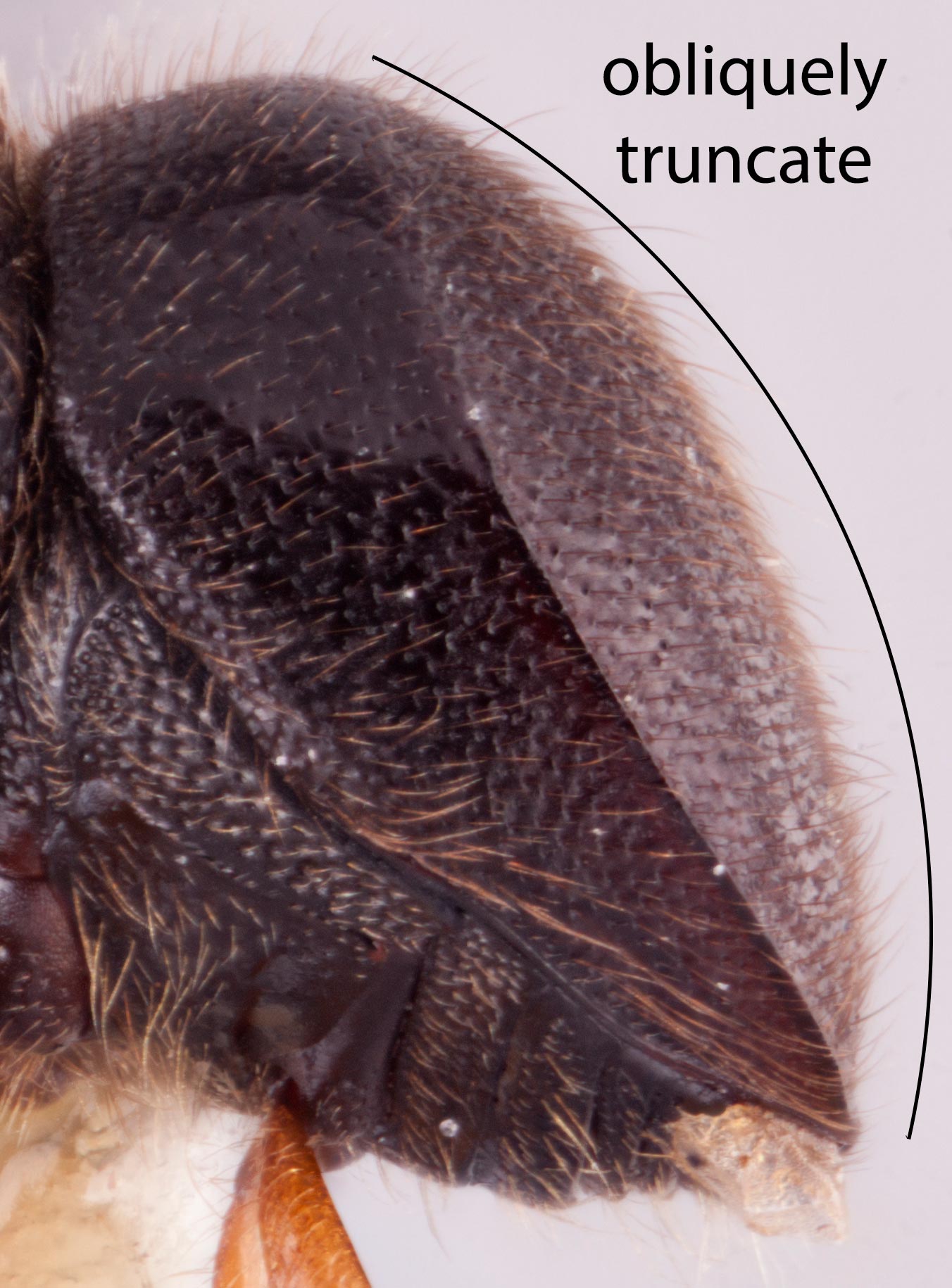 or truncatetruncate:
or truncatetruncate:
appearing cut off or suddenly shortened declivity
declivity
Distribution
China (Fujian)
Host plants
only known from Lithocarpus (Fagaceae) (Smith et al. 2020bSmith et al. 2020b:
Smith SM, Beaver RA, and Cognato AI. 2020b. A monograph of the Xyleborini (Coleoptera, Curculionidae, Scolytinae) of the Indochinese Peninsula (except Malaysia) and China. ZooKeys 983: 1-442. https://doi.org/10.3897/zookeys.983.52630)
DNA data
specimens not available for sequencing

